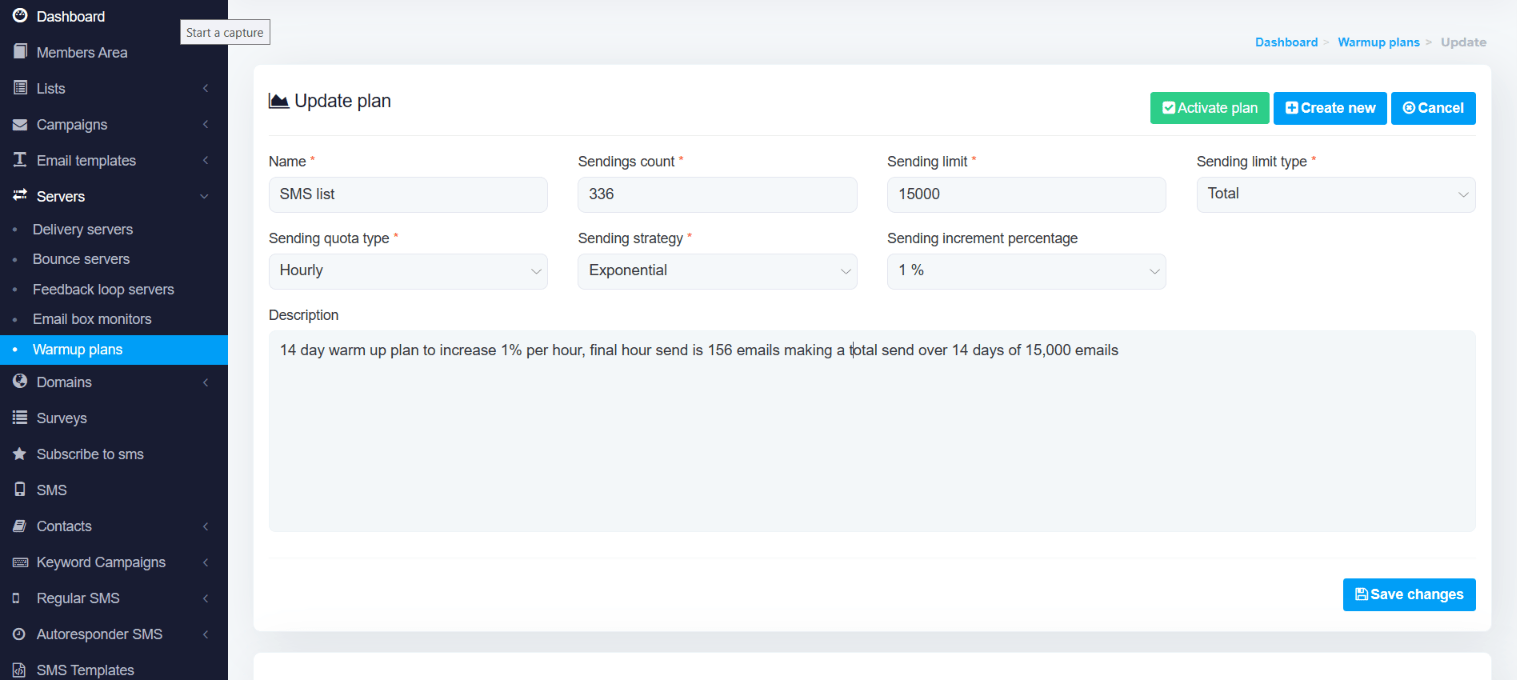The benefits of a dedicated IP for email sending
Using a dedicated IP address for email sending provides several benefits, particularly for businesses or organizations that engage in significant email marketing activities. Here are the advantages of having a dedicated IP for email sending:

Reputation control:
With a dedicated IP, you have full control over your sending reputation. Your sending practices and reputation are not influenced by other senders sharing the same IP address. This control is especially crucial if you have strict deliverability requirements or send a large volume of emails.
Improved deliverability:
A dedicated IP allows you to build a reputation solely based on your sending practices. By maintaining a positive reputation, you increase the chances of your emails being delivered to recipients' inboxes instead of being flagged as spam or blocked. It provides greater control over deliverability compared to shared IP addresses, which can be affected by the practices of other senders.
Flexibility and customization:
A dedicated IP address provides flexibility and customization options. You can set up your own authentication protocols, such as SPF (Sender Policy Framework), DKIM (DomainKeys Identified Mail), and DMARC (Domain-based Message Authentication, Reporting, and Conformance), tailored to your specific sending needs. This customization enhances email authentication, reduces the likelihood of spoofing or phishing, and strengthens your email security.
Higher sending volume:
Some email service providers (ESPs) may impose sending limits on shared IP addresses to prevent abuse or ensure fair usage among multiple users. With a dedicated IP, you have the opportunity to send larger volumes of emails without restrictions, allowing you to scale your email marketing efforts.
Better analytics and insights:
Having a dedicated IP address enables you to gather more accurate and detailed analytics about your email campaigns. You can monitor specific metrics, such as delivery rates, bounce rates, and engagement rates, attributed solely to your IP address. This information helps you optimize your email marketing strategy and improve campaign performance.
Enhanced sender reputation management:
If you are utilizing a shared IP address and one of the other senders engaging in email abuse or spamming gets the IP blacklisted, it can negatively impact your deliverability as well. With a dedicated IP, you eliminate the risk of being affected by the actions of other senders and have greater control over maintaining a positive sender reputation.
It's worth noting that while a dedicated IP offers benefits, it requires proactive management and maintenance to uphold a good sending reputation. Regular monitoring of email deliverability metrics, adhering to email best practices, and promptly addressing any issues that may arise are essential for maximizing the benefits of a dedicated IP for email sending
IP Warm-Up Plan: What It Is & Why You Need To Do It
IP warm-up is a process that involves gradually increasing the sending volume of emails or other types of communications through a specific IP address. It is an important practice for anyone who intends to send large volumes of emails, especially for businesses or organizations that are new to email marketing or have acquired a new IP address. The purpose of an IP warm-up plan is to establish a positive reputation for the IP address with email service providers (ESPs) and ISPs (Internet Service Providers) to ensure successful email deliverability.
When you start sending emails from a new IP address or significantly increase the volume of emails from an existing IP address, it can trigger spam filters or other protective measures put in place by ESPs and ISPs. This is because they need to assess the legitimacy and reputation of the IP address before allowing a large influx of emails. By implementing an IP warm-up plan, you gradually build a positive sending reputation, which improves the chances of your emails reaching recipients' inboxes instead of being flagged as spam or blocked.
Here's why you need to do an IP warm-up:
Reputation establishment:
ESPs and ISPs use reputation metrics to determine whether to accept or reject emails. Starting with a good reputation increases the likelihood of your emails being delivered and avoids being marked as spam.
Avoiding blacklisting:
Sending a high volume of emails from a new IP address without a warm-up plan can trigger spam filters and result in your IP address being blacklisted. Once blacklisted, it becomes extremely challenging to deliver emails successfully.
Gradual trust building:
By gradually increasing the sending volume, you demonstrate responsible email practices, showing ESPs and ISPs that you are a legitimate sender, not a spammer. This builds trust and improves your chances of successful email delivery.
Deliverability optimization:
The warm-up process allows you to monitor and optimize your email deliverability metrics, such as open rates, click-through rates, and bounce rates. This helps you identify and address any issues early on, ensuring your future email campaigns are effective.
To execute an IP warm-up plan effectively, you typically start with a low volume of emails and gradually increase it over several weeks. The specifics of the warm-up plan depend on factors like the volume of emails you intend to send, your email content and engagement rates, and the preferences of the ESPs and ISPs you're working with. It's important to closely monitor your email performance during the warm-up period and adjust your strategy if needed.
Overall, an IP warm-up plan is a proactive measure that helps establish a positive sending reputation, maximize deliverability, and ensure your emails reach the intended recipients' inboxes.
We include our own automated warm up process for all new accounts, each plan is a bespoke plan created based on the list size and the monthly sending volumes of each customer
We can create an exponential or a sequential process and we normally use hourly increments based on the list size

